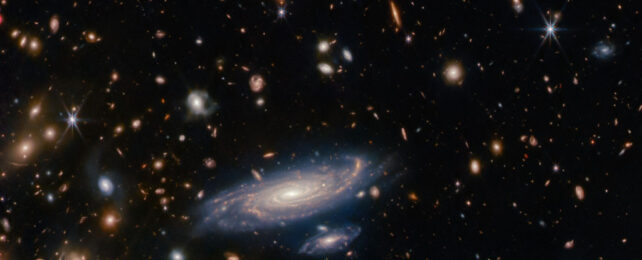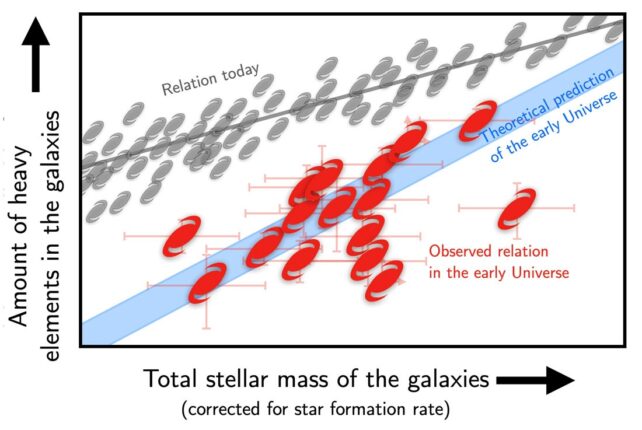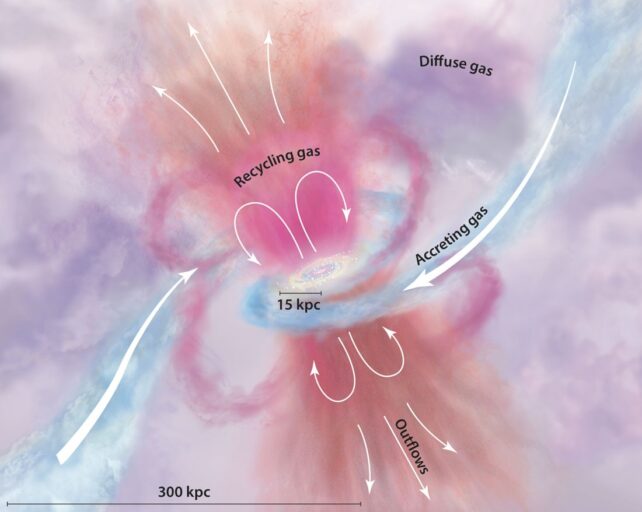
One of the James Webb Space Telescope's principal science goals is to observe the epoch where we think that the first galaxies were created, to understand the details of their formation, evolution, and composition.
With each deep look back in time, the telescope seems to break its own record for the most distant galaxy ever seen. Science papers are now are starting to trickle in, as astronomers are finally starting to collect enough data from JWST to build a deeper understanding of the early Universe.
In a new study published in Nature Astronomy, a team of researchers in Denmark believe they have observed some of the very first, earliest galaxies with JWST.
These galaxies are so old, they are likely still in the process of being formed.
Galaxy Ratios
One known standard is that the ratio between galaxies and their heavy elements has held constant in the local Universe through the last 12 billion years of history, or about 5/6 of the age of the Universe.
But with JWST, astronomers are now seeing that the youngest galaxies look different.
They don't have that same ratio of stars to heavier elements because they haven't gone through the cycles of star formation and star death yet, enriching gas clouds with metals, i.e., elements heavier than hydrogen and helium.

For this study, the astronomers looked at 16 galaxies, some of the earliest galaxies ever observed. Their observations revealed that the chemical abundances in these galaxies are one-fourth of that seen in galaxies that were formed later.
In their paper, the astronomers wrote that "these findings suggest that galaxies at this time are still intimately connected with the intergalactic medium and subject to continuous infall of pristine gas, which effectively dilutes their metal abundances."
As gravity gathered together the first clumps of gas,the first stars and galaxies were formed.
"When we analyzed the light from 16 of these first galaxies, we saw that they had significantly less heavy elements, compared to what you'd expect from their stellar masses and the amount of new stars they produced," said Kasper Elm Heintz, leader of the study and assistant professor at the Cosmic Dawn Center at the Niels Bohr Institute and DTU Space in Copenhagen, Denmark, in a press release.
These results, the astronomers say, are in stark contrast to the current model where galaxies evolve in a form of equilibrium throughout most of the history of the Universe, where there is a relationship between how many stars have formed and how many heavy elements have formed.

Not Entirely Surprising
The researchers say, however, this result is not entirely surprising. Theoretical models of galaxy formation have predicted this very thing. And now it has been observed.
"The result gives us the first insight into the earliest stages of galaxy formation which appear to be more intimately connected with the gas in between the galaxies than we thought," said Elm Heintz.
"This is one of the first James Webb observations on this topic, so we're still waiting to see what the larger, more comprehensive observations that are currently being carried out can tell us."
The researchers said there is no doubt that JWST will provide more data and soon they should have a much clearer understanding of how galaxies and the first structures began their formation during the first billion years after the Big Bang.
This article was originally published by Universe Today. Read the original article.





No comments:
Post a Comment